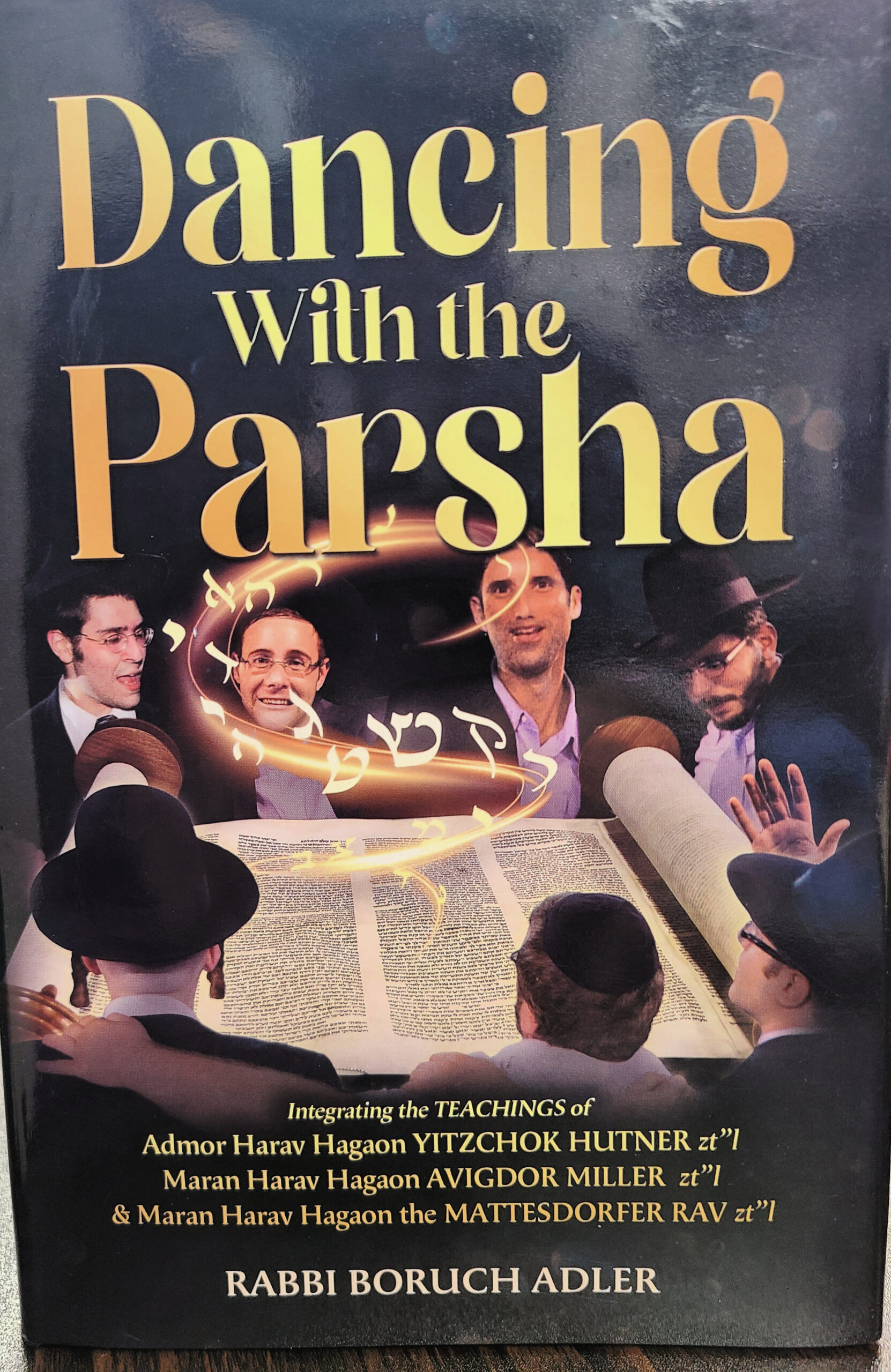By Rabbi Yair Hoffman
By day, Dr. Boruch Adler is a dentist. And no one ever doubted that he could drill deep (in order to remove all decay). But who could imagine that at night, when he apparently wrote this sefer, that Rabbi Boruch Adler could dig so deep?
This Sefer, (513 pages, English, and published by Menorah Press)” Dancing With the Parsha” is filled with precious pearls from Rabbi Boruch Adler’s Rosh Yeshiva and Rebbe Muvhak, Rav Yitzchok Hutner zt”l and interwoven with Torah thoughts by Yeshiva Chaim Berlin’s mashgiach, Rav Avigdor Miller zt”l, along with the Mattesdorfer Rav’s thoughts as well. The sefer is a work of deep machshava. How do we know that dreams are real?
In the aftermath of the October 7th murders, a question came to light that Rabbi Adler answers beautifully (and he is probably even unaware of the question – until he reads this review!)
A resident of the southern border of Eretz Yisroel had a dream that Shabbos night. His deceased Rebbe, who advised him to move into that community came to him and told him, “Flee immediately! Drive on Shabbos and go as quickly as possible back to Eretz Yisroel!” Initially, he ignored the dream, but then the dream repeated itself. Is he allowed to violate the halacha and drive on Shabbos just on a dream?
In Parshas Vayetzei, Yaakov dream of a ladder set earthward, and its top reached the Heavens. The ladder dream, Dr. Adler points out, represents Klal Yisroel’s relation with Hashem and guaranteed Klal Yisroel’s ownership of Eretz Yisroel, its strength in confronting her enemies, and Hashem’s unabated loyalty to Klal Yisroel.
But Dr. Adler asks, how did Yaakov know that it was real? Perhaps it was nonsense or a fantasy?
Dr. Adler explores the sources in which we can find the answer (and this Sefer was printed long before the October 7th massacre). The Midrash (Bereishs Rabba 89:5) points out that early morning dreams have validity; the Maharzav explains that two dreams in quick succession indicates its truth; the Maharsha in Brachos 55b classifies dreams into three categories and states that if a dream has only one possible interpretation – then treat it as real. Rav Yitzchok Zilberstein shlita ruled on the case that he was correct to be mechalel Shabbos based on the same sources that Rabbi Adler has marshalled.
In Vayishlach, Dr. Adler provides a remarkable review of Devorah, the nursemaid that Yaakov Avinu mourned along with his mother. He cites the view of Rav Chaim Kanievsky zt”l that she was actually Rivkah’s mother – the wife of Besuel and the overriding influence that allowed Rivkah Imeinu to emerge as a Tzadaikes. Extraordinary!
In Parshas Vayechi, Rabbi Adler explains the different aspects of the name Yaakov and of the name “Yisroel.”
In Parshas Bereishis, Rabbi Adler unfolds deep insights into how and why each day of Maaseh bereishis was infused with Chessed and the ability to do Teshuvah.
In Mikaitz, Rabbi Adler provides an almost exhaustive exposition as to the parameters of Bitachon and Hishtadlus. He cites Rabbeinu Yona that states that one must always realize that it is Hashem who is behind it all – even though we are obligated in doing Hishtadlus.
The sefer is filled with anecdotes as well. Rabbi Adler recalls how his Mashgiach, Rav Avigdor Millerm would fondly recall a story that was part of the lore of the Slabodka Yeshiva. There was a Vaad HaMussar and the question was what to learn next. It had to have been that someone from the hanhalla of the Volozhin Yeshiva was present in Slabodka and gave the suggestion that Emes be the topic of study that month. The Alter of Slabodka rejected the idea, explaining that Absolute Emes is only the domain of Hashem Alone – “Hashem Elokaichem Emes.” This reviewer does not fully comprehend the intent of the Alter here, because so many Mussar Seforim tell us of our obligation to emulate this Aspect of Hashem. And emes is the signet ring of Hashem.
Throughout the Sefer, Rabbi Adler demonstrates an uncanny ability to weave seemingly disparate Torah sources and create a wonderful tapestry with remarkable insights into the very depth of the topic. He is at home with the writings of the Vilna Gaon, with Kabbalistic sources, with the Abarbanel, and with the Gedolei HaMussar of yesterday (Rav Gedaliah Shorr zt”l, and the great Chassidish masters too. The Sefer is aptly named because when learning it, the inspiration is so tangible and evident that one is prompted to truly dance. In his acknowledgment he mentions the careful polishing of his writings by his wife, his partner in all that they do. “Dancing With the Parsha is available through Shirah Distributors (718) 871-8652 and wherever fine Torah seforim are sold.
The reviewer can be reached at [email protected]











